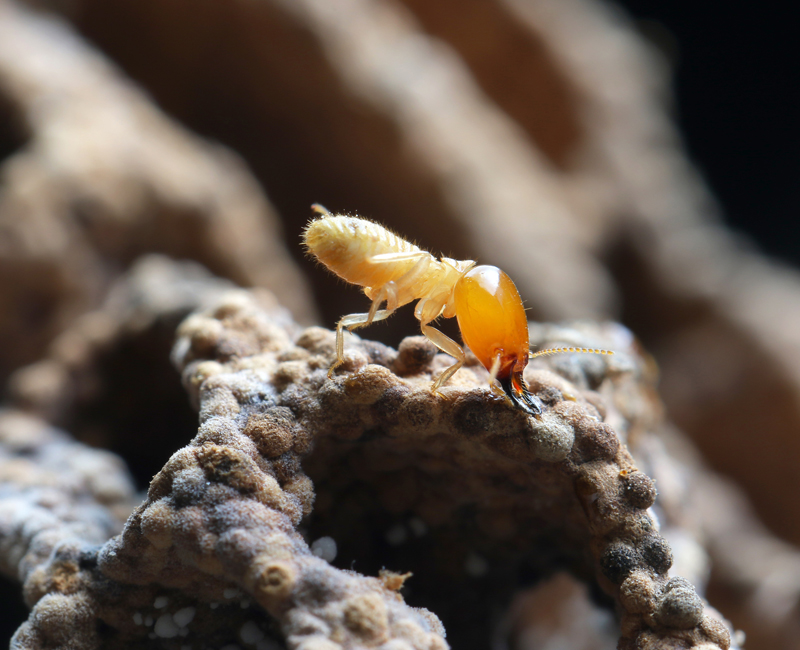- Al Khobar - 31952
- +966 13 881 7959
- info@clce-pc.com
Our Services

Termite Control
Termites Biology
There are four major types of termites: drywood termites, subterranean termites, mound and arboreal termites, and dampwood termites.
Termites are social insects living in colonies within a caste structure. Castes consist of alates (winged- adults), reproductives, workers and soldiers.
Rodent Control
The Economic Importance Of Rodent Pests
The activities of rats and mice result in harm to urban social systems and a wide assortment of consumer commodities. They are also a major threat to human health due to their capacity to spread diseases that affect humanity.


Mosquitoe Control
MOSQUITOES
Females deposit eggs close to water or on the surface of water. The larval and pupal stages occur in water. Adults emerging from the aquatic stages mate, after which the females seek a blood meal to obtain the protein necessary for the development of eggs The male mosquito does not take a blood meal, but may feed on plant nectar. Males live for only a short time after mating.
Ant Control
ANTS BIOLOGY
All ants are social insects consisting of four castes:Queens (large egg layers),Males (winged),Workers (wingless andsterile) and
Soldiers (defense). The number of ants in a colony varies from hundreds to thousands.


Fly Control
HOUSE FLIES BIOLOGY
Females lay several batches of about 150 eggs in warm, moist, organic materials such as manure, garbage, lawn clippings, decaying vegetables or fruit.Typically, eggs hatch in less than a day. Emerged larvae (maggots) can complete development within a week.
Cockroach Control
THE ECONOMIC IMPORTANCE OF COCKROACHES
The most common cockroach pest species are the American cockroach and the German roach. Roaches are omnivorous and feed on human and non-human foods, such as household items, glue in books and furniture. an unpleasant odor due to chemicals produced by abdominal glands.


Spider Control
the economic importance of spiders
Pest Control: Spiders are natural predators of insects, and many species are adept at controlling populations of pests.
Silk Production: Some spiders produce silk, a strong and lightweight material with various applications.
Bed Bugs Control
BED BUGS- BIOLOGY
Size: adults are 4–5 mm long and 1. 5–3 millimeter broad. Color: adults are light brown to reddish brown. Adults are flattened, oval-shaped and have no hind wings. Females can lay 3–4 eggs daily until the end of their life spans (about nine months under warm conditions), possibly generating as many as 500 eggs at this time.


Termite Control
Termites Biology
There are four major types of termites: drywood termites, subterranean termites, mound and arboreal termites, and dampwood termites.
Termites are social insects living in colonies within a caste structure. Castes consist of alates (winged- adults), reproductives, workers and soldiers.

Rodent Control
The Economic Importance Of Rodent Pests
The activities of rats and mice result in harm to urban social systems and a wide assortment of consumer commodities. They are also a major threat to human health due to their capacity to spread diseases that affect humanity.

Mosquitoe Control
MOSQUITOES
Females deposit eggs close to water or on the surface of water. The larval and pupal stages occur in water. Adults emerging from the aquatic stages mate, after which the females seek a blood meal to obtain the protein necessary for the development of eggs The male mosquito does not take a blood meal, but may feed on plant nectar. Males live for only a short time after mating.

Ant Control
ANTS BIOLOGY
All ants are social insects consisting of four castes:Queens (large egg layers),Males (winged),Workers (wingless andsterile) and
Soldiers (defense). The number of ants in a colony varies from hundreds to thousands.

Fly Control
HOUSE FLIES BIOLOGY
Females lay several batches of about 150 eggs in warm, moist, organic materials such as manure, garbage, lawn clippings, decaying vegetables or fruit.Typically, eggs hatch in less than a day. Emerged larvae (maggots) can complete development within a week.

Cockroach Control
THE ECONOMIC IMPORTANCE OF COCKROACHES
The most common cockroach pest species are the American cockroach and the German roach. Roaches are omnivorous and feed on human and non-human foods, such as household items, glue in books and furniture. an unpleasant odor due to chemicals produced by abdominal glands.

Spider Control
the economic importance of spiders
Pest Control: Spiders are natural predators of insects, and many species are adept at controlling populations of pests.
Silk Production: Some spiders produce silk, a strong and lightweight material with various applications.

Bed Bugs Control
BED BUGS- BIOLOGY
Size: adults are 4–5 mm long and 1. 5–3 millimeter broad. Color: adults are light brown to reddish brown. Adults are flattened, oval-shaped and have no hind wings. Females can lay 3–4 eggs daily until the end of their life spans (about nine months under warm conditions), possibly generating as many as 500 eggs at this time.
